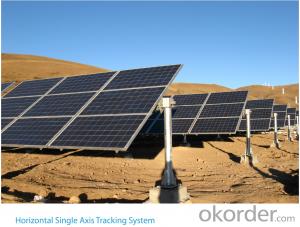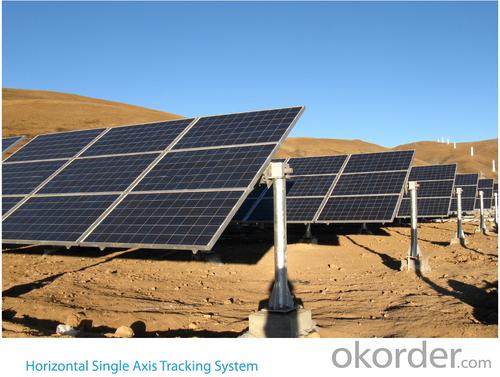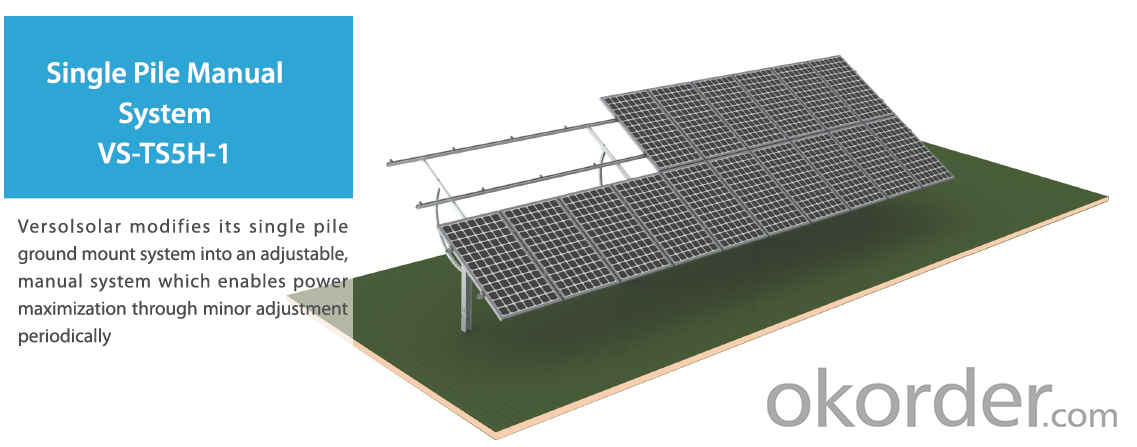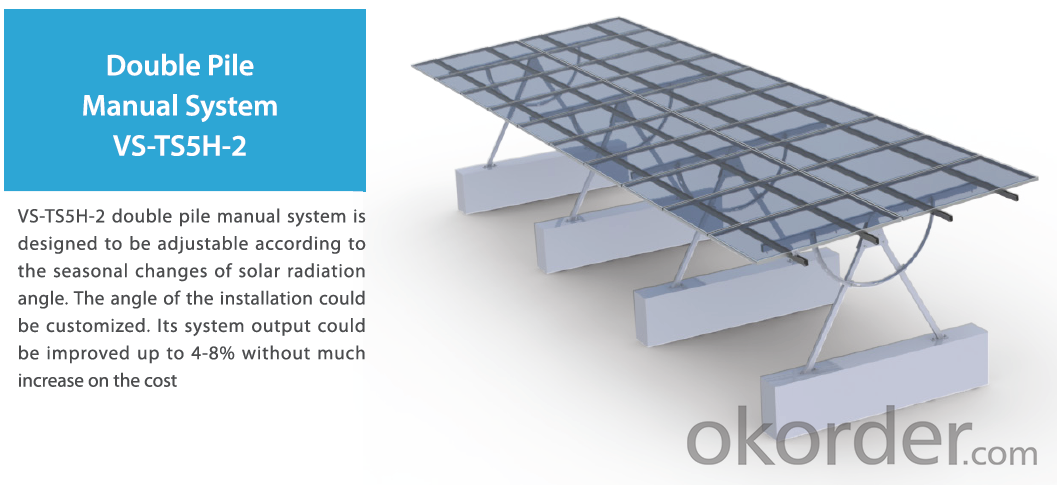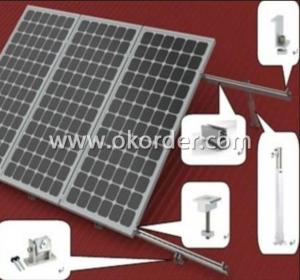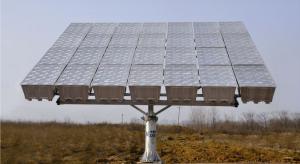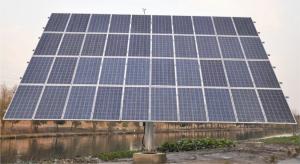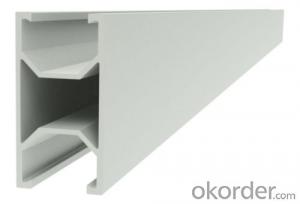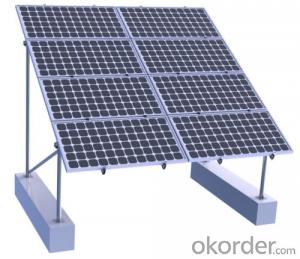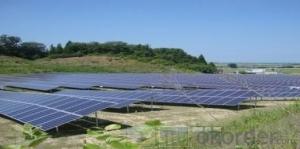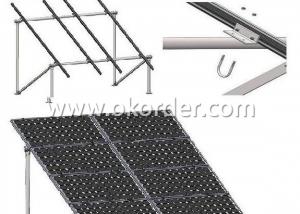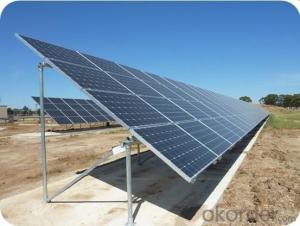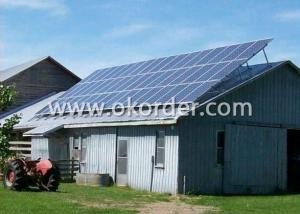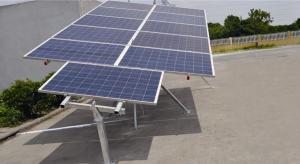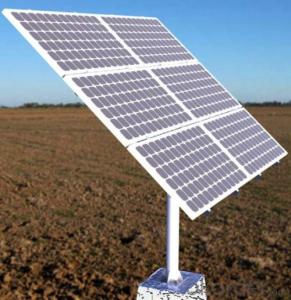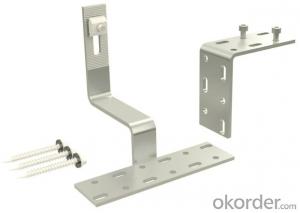solar PV tracking system
- Loading Port:
- China Main Port
- Payment Terms:
- TT OR LC
- Min Order Qty:
- -
- Supply Capability:
- -
OKorder Service Pledge
Quality Product, Order Online Tracking, Timely Delivery
OKorder Financial Service
Credit Rating, Credit Services, Credit Purchasing
You Might Also Like
Solar tracking system renders solar power much more cost-effective as it increases overall power collection efficiency. Its advantages have been proven in worldwide large scale solar plants. VERSOLSOLAR is the only one in China supplying tracking system. We've designed various tracking solutions to suit different application needs

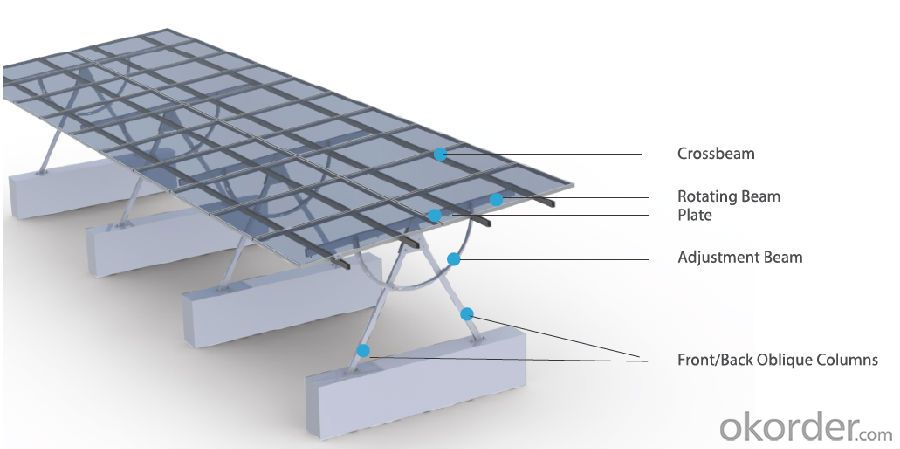



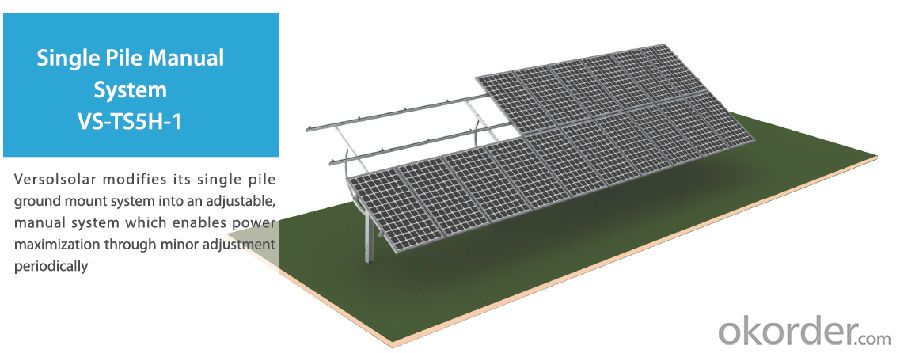

- Q: Can a solar mounting system be used in areas with solar incentives for agricultural operations?
- Yes, a solar mounting system can be used in areas with solar incentives for agricultural operations. These systems are designed to support and securely mount solar panels on agricultural land, allowing farmers to generate clean energy and take advantage of financial incentives offered for solar installations. They can be tailored to the specific needs of agricultural operations, such as accommodating irrigation systems or livestock grazing, while still maximizing solar energy production.
- Q: Can a solar mounting system be used with solar-powered ships?
- Yes, a solar mounting system can be used with solar-powered ships. Solar mounting systems are designed to securely hold solar panels in place, whether it is on rooftops, land, or even on the deck of a ship. By installing a solar mounting system on a solar-powered ship, it is possible to harness solar energy to power various onboard systems and reduce reliance on traditional fuel sources.
- Q: Can a solar mounting system be used in areas with limited access to tax incentives?
- Yes, a solar mounting system can still be used in areas with limited access to tax incentives. While tax incentives can provide additional financial benefits for installing solar, they are not the only factor to consider. The primary advantages of solar energy, such as reduced electricity bills, environmental sustainability, and energy independence, can still be realized in areas without tax incentives. Additionally, the decreasing cost of solar panels and the availability of other financial options, such as grants or financing programs, can make solar installations financially viable even without tax incentives.
- Q: What is the maximum weight capacity of a solar mounting system?
- The maximum weight capacity of a solar mounting system can vary depending on the specific design and materials used. However, typical residential solar mounting systems can support weights ranging from 1,000 to 5,000 pounds, while commercial or utility-scale systems may have capacities of 10,000 pounds or more. It is important to consult the manufacturer's specifications and engineering guidelines to determine the exact weight capacity for a particular mounting system.
- Q: Can a solar mounting system be used in areas with seismic activity?
- Yes, a solar mounting system can be used in areas with seismic activity. However, it is important to ensure that the mounting system is designed and engineered to withstand seismic forces. Special considerations such as appropriate anchoring techniques, structural reinforcements, and flexible connections may be required to ensure the system's stability and prevent damage during seismic events.
- Q: What is the expected maintenance schedule for a solar mounting system?
- The expected maintenance schedule for a solar mounting system may vary depending on factors such as the type of system, location, and environmental conditions. However, in general, solar mounting systems typically require minimal maintenance. Routine inspections to ensure the integrity of the system, such as checking for loose or damaged components, may be recommended annually or biannually. Additionally, regular cleaning of the solar panels to remove dirt, debris, and any potential shading obstructions is advisable to optimize performance. Overall, a well-designed and properly installed solar mounting system should have a relatively low maintenance requirement.
- Q: Are there any specific considerations for installing a solar mounting system in a snowy climate?
- Yes, there are several specific considerations for installing a solar mounting system in a snowy climate. Firstly, it is important to choose a mounting system that can handle the weight of snow accumulation. This may require using stronger and more durable materials, as well as ensuring proper anchoring and support structures. Additionally, the tilt angle of the solar panels should be optimized to allow for snow shedding. A steeper tilt angle can help prevent snow buildup and allow for better solar panel performance. Regular maintenance, such as snow removal, may be necessary to ensure optimal solar panel efficiency during the winter months. This can be done manually or by using automated snow removal systems. Lastly, it is crucial to consider the impact of reduced sunlight exposure due to shorter daylight hours and cloud cover in snowy climates. This may require adjusting the system's positioning and size to compensate for lower levels of solar radiation. Overall, careful planning, appropriate system design, and proactive maintenance are essential when installing a solar mounting system in a snowy climate.
- Q: Can a solar mounting system be installed on the ground?
- Yes, a solar mounting system can be installed on the ground. Ground-mounted solar systems are commonly used in areas where rooftop space is limited or not suitable for solar panel installation. These systems are designed to securely hold the solar panels at an optimal tilt angle to maximize energy production.
- Q: What is the full support system
- Full scaffolding is mainly used for large single-storey building, exhibition hall, gymnasium and other high-rise, large building between the top of the building decoration and structural construction, must contain pole, bar, bracing, scissors support.
- Q: Can solar mounting systems be installed on offshore structures?
- Yes, solar mounting systems can be installed on offshore structures. However, there are certain challenges and considerations that need to be addressed, such as the corrosive environment, strong winds, and waves. Specialized designs and materials are required to ensure the stability and durability of the solar mounting systems in offshore conditions.
Send your message to us
solar PV tracking system
- Loading Port:
- China Main Port
- Payment Terms:
- TT OR LC
- Min Order Qty:
- -
- Supply Capability:
- -
OKorder Service Pledge
Quality Product, Order Online Tracking, Timely Delivery
OKorder Financial Service
Credit Rating, Credit Services, Credit Purchasing
Similar products
Hot products
Hot Searches
Related keywords
